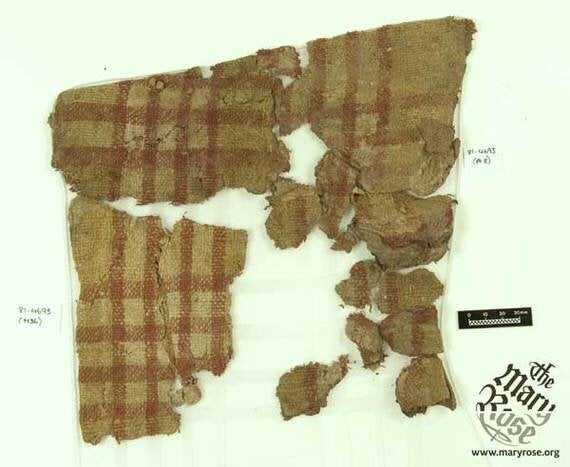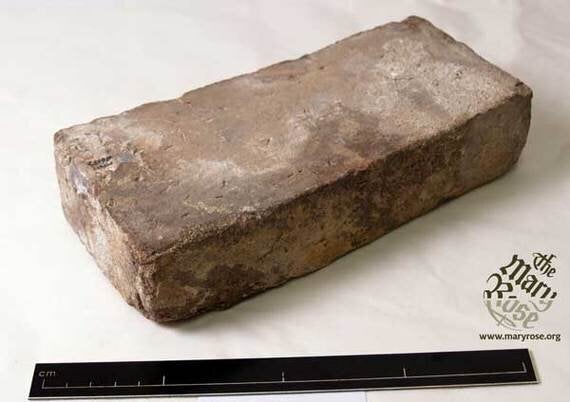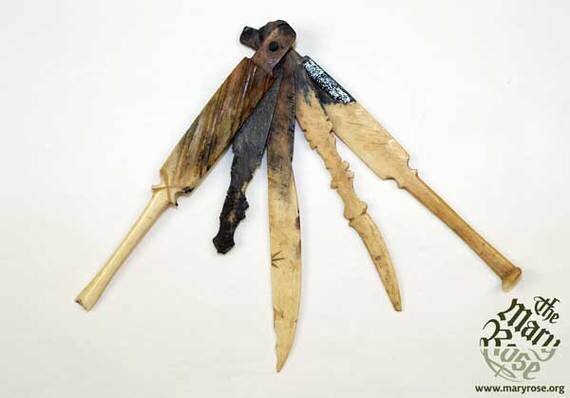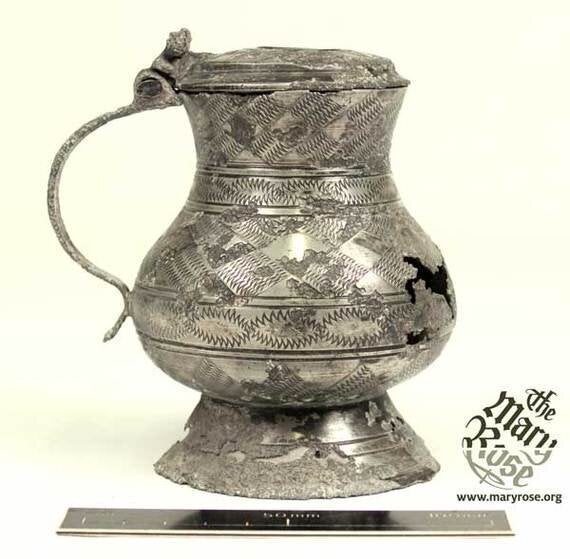Yet here they are, in the Mary Rose Museum...
1.A Feeding Bottle

Those of you who either own, know or have been a baby will recognise this as a feeding bottle. Obviously the nipple on the top is wooden, rather than rubber as it is today, but it serves the same purpose.
But this is a Tudor warship, you're quite sensibly thinking, who brings a baby into such an environment? Well, nobody is the rather obvious answer, but then why is there a feeding bottle?
It was found in the Surgeon's cabin, but even then, he's hardly going to be delivering babies at sea, so who was he feeding? Well, think about it. You've been through major surgery (much like we described in a previous "Five Things"), and obviously, you're quite weak, but need to take in extra fluids. You don't want to pour it in from a tankard, it'd spill everywhere and that stuff's rationed, so you put it in a feeding bottle, and the patient can drink as slowly as he wants, without spilling a drop.
2.Checked cloth

If you've seen films, or telly, you know that in the olden days all rich people wore lots of red or black lined with fur, while the working classes wore brown, grey or browny-grey clothes.
And yet, inside a leather jerkin recovered from the Mary Rose, we found this red and yellow checked wool lining. It may have been part of a shift, or undershirt, which suggests that the checked shirt look isn't just for hipsters, lumberjacks or lorry drivers in 1980s chocolate adverts.
We featured this on our Facebook page many years ago, and heard back from a reenactor who wears a shirt made of similar material to various Fairs, and whenever he's told by his fellow reenactors it's not authentic, he pulls out the picture we posted. Nice to know we're helping to silence pedants!
3. Bricks. Lots of bricks.

"No wonder it sank if it was made of bricks!"
Now we've got the obvious joke out of the way, why did the Mary Rose have nearly 4,000 bricks on board?
All the bricks were found in the centre of the ship, just in front of the base of the main mast in the hold. While they may have served a secondary purpose as ballast, their actual purpose was far more practical.
Cooking for 500 men requires a big oven. In fact, it requires two big ovens. We know this as, under the piles of bricks, we found the remains two copper cauldrons, iron supports, fire-scorched bricks and, most compellingly, bricks still in the shape of the original oven.
Our head of Interpretation is a bit obsessed with the ovens, and built a full-sized replica so he could practise cooking on it. He makes a pretty good pigeon stew, and his venison sandwiches are tasty, but you might want to turn down the boiled beef - it's made in a lead-lined cauldron!
4.Manicure Sets

We often think of men looking after themselves to be a fairly recent thing, the 'metrosexual' male with his 'guyliner', 'mansturiser' and exfoliating scrubs. But you have to remember that throughout history there have been long periods of men looking after their appearance, especially in the upper classes.
This makes the discovery of this manicure set a bit odd, as it was found, not in the chest of an officer, but that of a carpenter, a manual labourer rather than the son of a noble.
There are a few possibilities; it might have been a gift for a wife or girlfriend, although the fact it was found in association with a toilet set which included a shaving set would suggest otherwise (even if she needed it, you just wouldn't...). It may have been for work reasons - carpenters are going to get splinters, even under the fingernails, so you need to look after them! Or, he just wanted nice nails. We shouldn't judge.
5.An Antique Tankard

Well, obviously you would expect to find an antique on a Tudor warship, but this is something different. While most of the designs of objects recovered date to the 1540s (and, due to the unique nature of many of the objects, some previously presumed later!), this tankard, recovered from a different carpenters chest to the one mentioned above, seems to resemble those of the early 1400s.
While this could be the earliest example of retro design, it's more likely to be genuine, and either be a family heirloom, or purchased second hand after a rich family fell on hard times. Though, it it's anything like modern antique markets, I dread to think how much our carpenter ended up paying for it!
